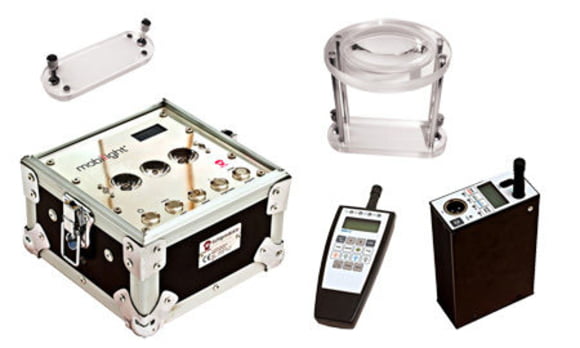8. Summary
Possibilities
It does not matter if you just want to control four spotlights or a complex light show with 20 moving heads, 72 LED spotlights, 4 dimmers with 6 channels each, 2 fog machines and a laser - DMX facilitates all kinds of lighting design, from the smallest level to the largest.
It is true that in the entry-level segment in particular you'll still find small lighting systems with analogue controls, but you should be aware of the fact that normally these cannot be expanded. If you need "intelligent light" in particular, you won't be able to do without a DMX-controlled light show.
Of course you can do without cables entirely. Wireless remote controls allow you to direct up to 100 devices per control unit, and the range of 300m should satisfy most requirements.

The future
The DMX signal's successors - network systems - have already come out of the gate and are trying top outstrip classic DMX systems in the professional segment. Due to considerations of signal stability and reliability, however, most lighting technicians and designers do not wish to forego DMX signal technology.
For a truly reliable portable network system you'd have to shell out a multiple of the cost of a DMX system, which makes the former unfeasible for the entry-level and semiprofessional market especially.
Network systems are currently only in common use in permanently installed systems and for extremely complex light shows.
Thus, DMX-controlled light effects will be with us for the foreseeable future, and you'll encounter them everywhere - be it while attending a Shakespeare play in your favourite theatre or enjoying the comfortingly familiar sounds of swing classics played by a live brass band on a summer evening.
Yhteyshenkilösi
Product Highlights
Tarjoukset
-
DMX-valopöydät
-
DMX-ohjelmat ja -rauta PC:lle
-
Himmentimet
-
Kytkinpakit
-
Himmenninpuomit






